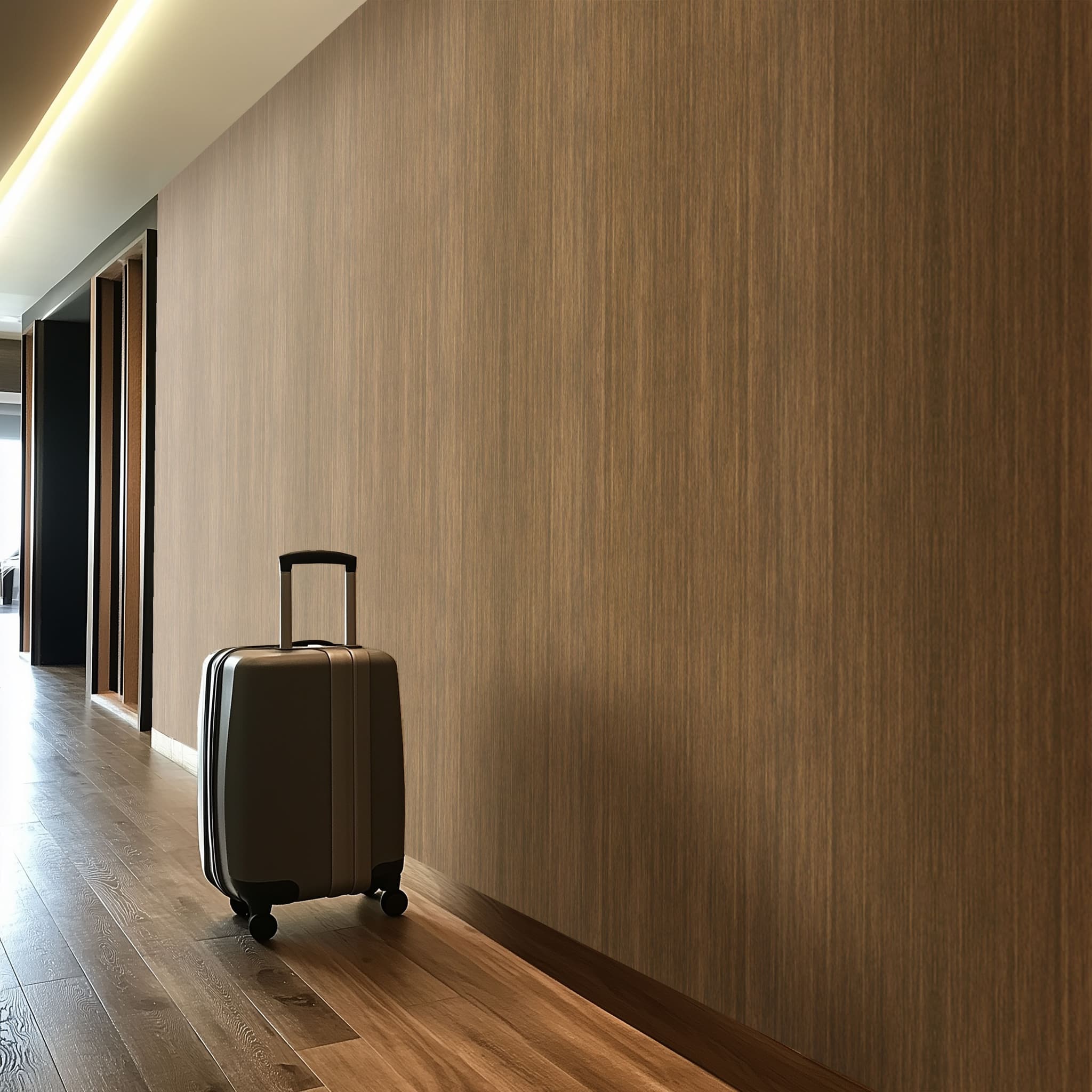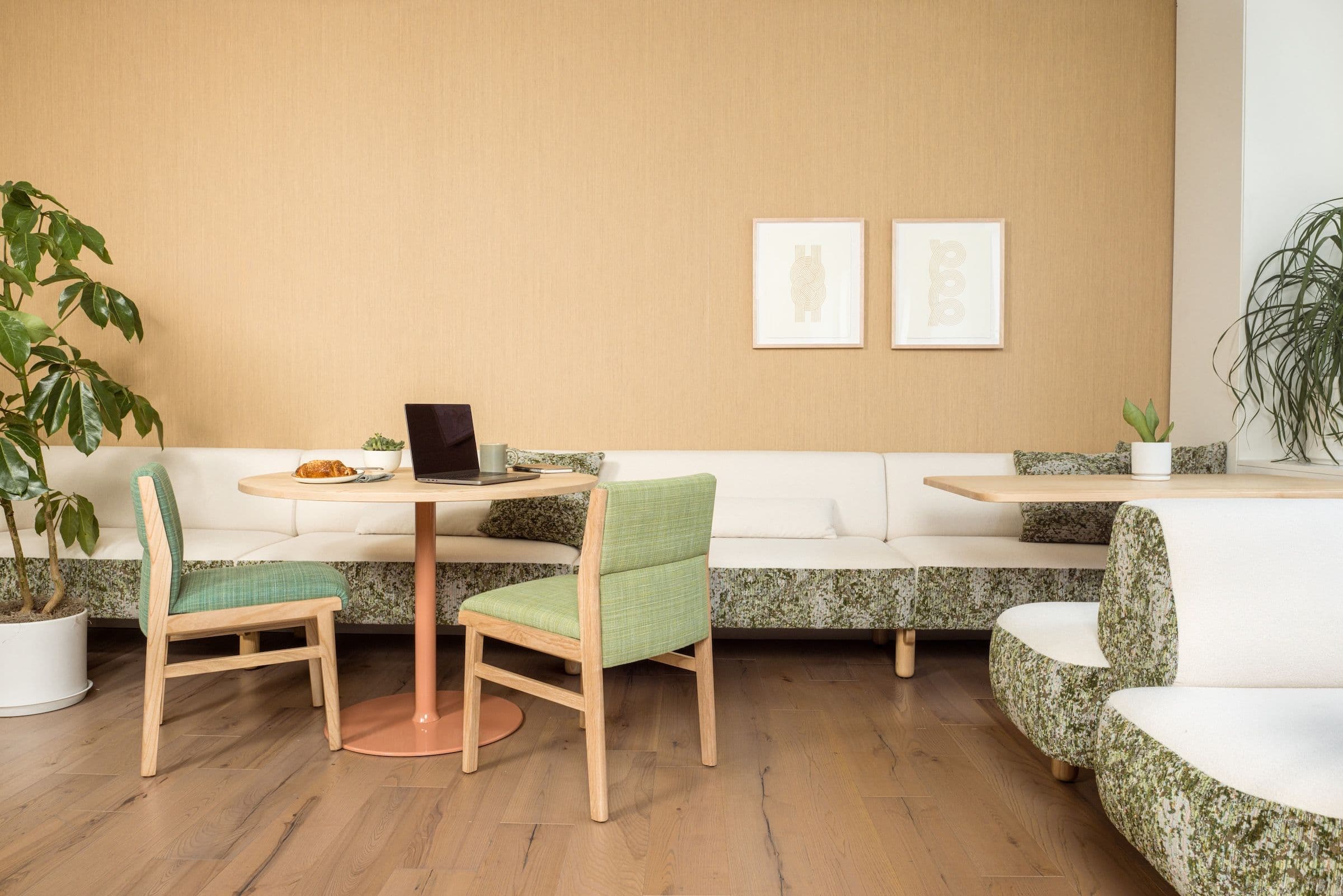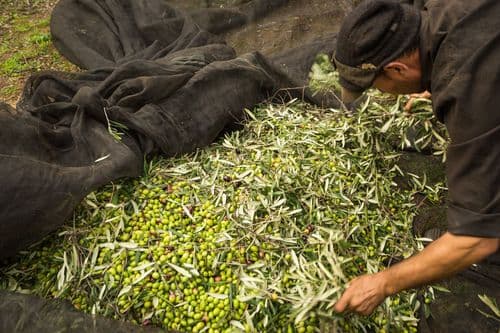Key Points
- Cleared ANSI/KCMA W102 and ASTM C-1629; outperforms many woods and lower-grade plastics in practice.
- >98% plant-derived thermoplastic resin; VOCs below measurable levels; thin 0.75 mm sheet aids fire performance.
- Carbon-negative profile (~1.4 lb CO₂ sequestered per lb fibre), low-energy process, recyclable/compostable inputs.
- Designed for trade install: PVA bonding, abrasion/UV/moisture-resistant face, adhesive-ready back; panels can be removed and reground.
Full interview with ekoa®
1. What specific mechanical and aesthetic properties of flax made it the foundation for developing ekoa® as a viable alternative to carbon fiber and hardwoods in interior applications?
Flax has the highest stiffness-to-weight ratio of any plant fiber, which is exactly what you need for a structural surface. That’s why we started there. Because we’re using flax, we’re also able to tap into its mature textile manufacturing supply chain, which has been around since at least the Industrial Revolution. That maturity means we can produce consistent, high-quality products at scale, because the infrastructure already exists.
It’s important to note: flax is what we use today, but on our proprietary platform, we’ve tested fibers from around the world and they basically all work. Flax just happens to be the easiest and highest-performing of the readily available inputs.
The aesthetic of ekoa® was actually a happy accident. We set out to reverse engineer the highest-performing natural material, old-growth rainforest wood. While we selected flax for its performance, it turns out that by reverse engineering the structure of old-growth wood, the unidirectional flax just naturally reads like grain. The wood look wasn’t even the goal, it was the byproduct of chasing performance.
2. Could you describe how the lamination and resin process was adapted to maximise both the tensile performance and natural grain character of the flax fibers?
We don’t use resin infusion, we use additive manufacturing. Our primary focus is performance, in this case, tensile modulus (aka stiffness). We use clear, plant-derived resins so the flax character shows through. That lamination process allows the natural character of the material to express itself, because we’re starting with clean and clear chemistry inputs. The process is designed to scale, as well as produce high-quality, consistent results every time.
3. ekoa® is promoted as impact- and stain-resistant. What test standards or benchmarks have you used to verify these claims, and how do the results compare with conventional architectural surface materials?
From the beginning, our goal was to reframe expectations of natural products and prove they could be high performance. So we went straight to third-party certifications, which are the gold standard in architecture and design. The industry already has robust testing in place, so we wanted to clear those bars and flip the script on this emerging class of products made from renewable plants.
To date, we’ve passed third-party strength testing for walls and cabinetry widely used in the U.S., including ANSI/KCMA W102 and impact resistance (ASTM C-1629). Because sustainability is at the core of everything we do, we’ve secured a growing list of certifications including the USDA Certified Biobased Product label, Clean Air GOLD, Red List Free, a Health Product Declaration, mindful MATERIALS certification, and we’re a MindClick Sustainability Assessment Leader. ekoa® also contributes to LEED certification.
We’re proud to say it’s the first time a natural fiber material has passed this level of testing, and we’ve even cleared tougher performance requirements in transportation. In practice, we outperform many woods and lower-grade plastics.
4. In scaling ekoa® from guitar soundboards to commercial interior panels, what technical challenges arose in terms of sheet size stability, and how were these addressed?
The first challenge was cost. If ekoa® is too expensive, then it’s not serving the bigger goal, which is to reduce deforestation via widespread adoption. So cost parity was essential.
The second challenge was technical: going bigger was the hardest part. We started at six inches wide and scaled up slowly. Every inch wider exposed new hurdles. We needed our own facility to make full-width sheets, but to get that facility we first had to convince investors we could make full-width sheets. It was a classic catch-22.
We broke through by treating the process like software, with rapid iteration. We made over a thousand one-foot-square samples to troubleshoot issues, while at the same time producing rolls, because that’s how volume production works. That allowed us to solve problems quickly and scale up. Bigger is always harder, but we got there. Natural fiber composites are our expertise, and when you layer in architecture, we’re basically the only ones in this space.

5. Given flax’s rapid growth cycle and low input requirements, how does its cultivation footprint influence your overall life-cycle assessment of ekoa® products?
Flax is CO₂ negative, from farm to gate, about 1.4 pounds of carbon is sequestered per pound of fiber. That significantly lowers our lifecycle footprint, which is already the lowest in our category. Our inputs are recyclable and compostable, and our process uses very little energy compared to other materials. Overall, you get a low-footprint product with multiple end-of-life pathways.

6. Could you explain how the resin system used in ekoa® balances strength, fire performance, and low VOC emissions while remaining compatible with plant-based reinforcement?
In any composite, the strength comes from the fiber. The resin just holds it in place. We use a thermoplastic resin system that is over 98% plant-derived, so it's super-low emitting. That’s important because a lot of products claim "low VOC," but they still emit significant amounts. With ekoa®, the VOCs are literally below measurable levels, which directly benefits indoor air quality.
Fire performance comes from dematerialization. The sheet is very thin, about 1/32 of an inch (0.75mm). That means you get strength and durability without adding mass.
7. How does the natural variation in flax fiber colour and grain influence the design process for clients, and what techniques do you use to maintain visual consistency where needed?
There’s no weave. It’s unidirectional flax, and we let that linear fiber show through so it becomes an authentic part of the aesthetic. In many cases, we just add a slight tint. We use a proprietary, water-based pigment process that’s more like staining or tinting wood than painting over it.
All of this is done under California regulations, which are among the strictest in the world. We also use advanced automation to maintain consistency, so we get a clean, natural-grain look without losing the authentic character of the fiber.
8. With applications spanning healthcare, hospitality, and workplace interiors, how have you adapted ekoa®’s performance profile to meet the specific durability demands of each sector?
We started by targeting the toughest applications, hospital wall protection, hotel lobbies, elevator interiors. That meant the baseline specification was set quite high. It gives designers in offices or residential plenty of headroom when considering durability. In other words, if it can survive healthcare and hospitality, it can thrive anywhere.
9. Could you detail the bonding or fixing methods recommended for ekoa® installation, and how these choices affect both longevity and the ability to disassemble or reuse panels?
ekoa® is structural, not simply decorative, so it needs professional installation by millworkers or wallcovering professionals. From the start, our question was: how do we make a product that drops into their established methods?
We had to design a material that’s resistant to moisture, scratches, and UV, but also bonds readily to different substrates. Those requirements are completely at odds. Resistant on the top, receptive to adhesive on the back, and lays flat. Making that balance work took about a year of development.
The final product has a top face tuned for resistance and a back face tuned for adhesion. It bonds with standard wood glues (PVA), which are low-toxicity and widely used. At end of life, panels can be removed and reground for molded products.
10. What role do you see plant-based composites like ekoa® playing in the future of regenerative design, particularly in replacing high-embodied-carbon finishes in mainstream architecture?
Specifiers and designers make decisions based on aesthetics, performance, price, and a certain intangible je ne sais quoi. Sustainability and human health are part of that, but they aren’t usually the sole drivers. We don’t expect people to choose ekoa® just because the carbon impact is lower. We expect them to choose it because it’s a better product. The fact that it also replaces high-embodied carbon, high-VOC finishes is the win.
11. What innovations in fiber sourcing, resin chemistry, or manufacturing scale might further extend ekoa®’s range of applications without compromising its environmental integrity?
We already have the lowest footprint in our category, but we’re not stopping there. We use lifecycle assessments, not just for certification, but as a design tool. We’re very close to net neutral, and expect to reach that next year.
Looking ahead, the next big innovation is scaling globally while sourcing fibers and resins within a few hundred miles of a facility. Cleaner energy and cleaner chemistry are ongoing goals, as is platform flexibility, where our system can take in different bio-fibers and output multiple product formats. Basically, we’re aiming to replace any surface or panel you see today that is made from either wood or plastic.








